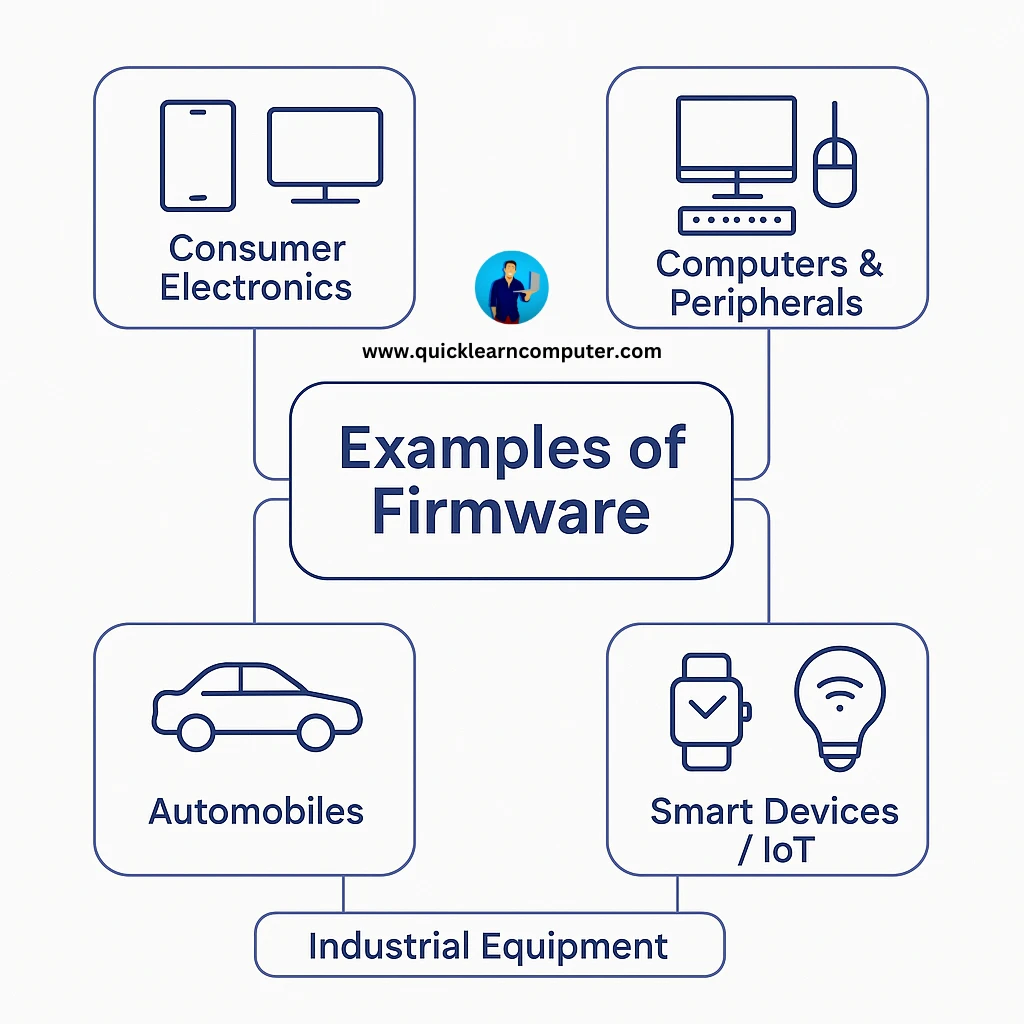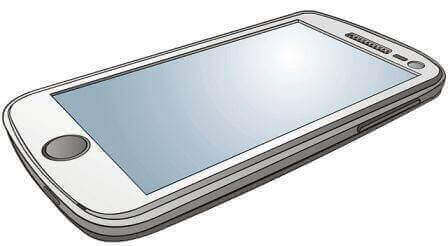Firmware is the invisible force powering the devices we use daily, from smartphones to washing machines. But what exactly is firmware, and where can you find it in action?
In this article, we’ll explore real-world examples of firmware, its role in various devices, and why it’s essential to modern technology.
Whether you are a tech enthusiast or just curious about the inner workings of your gadgets, this guide will help you understand firmware examples in a clear and easy way.
What is Firmware?
Firmware is a type of software that is embedded into hardware devices. Unlike traditional software, firmware is not meant to be frequently changed or updated.
It provides low-level control for a device’s specific hardware and ensures that it functions correctly. Firmware is typically stored in the read-only memory (ROM) of a device, making it permanent or semi-permanent.
While the term might sound technical, firmware is everywhere, such as - in your phone, TV remote, router, and even in your car. Understanding firmware helps us appreciate how everyday electronics work reliably and consistently.
Examples of Firmware
There are various examples of firmware, which are given below.

1. Firmware in Smartphones

Smartphones are one of the most advanced consumer devices, and firmware plays a vital role in their functionality.
From powering up your phone to managing the touchscreen, firmware enables seamless interaction between the software and hardware components.
- Baseband Firmware - Controls communication functions like mobile data, Wi-Fi, and Bluetooth.
- Camera Firmware - Manages image processing and sensor behavior.
- Touchscreen Controller Firmware - Ensures smooth and responsive touch screen interactions.
Regular updates improve performance and fix bugs, but core firmware often remains stable to maintain device integrity.
2. Firmware in Routers and Modems
Your internet router or modem wouldn’t work without firmware. It controls the device's networking capabilities, ensuring stable internet connections, secure protocols, and performance optimization.
Examples of firmware in routers include configuration settings, firewall rules, and wireless broadcasting.
Manufacturers like Netgear, TP-Link, and Cisco release firmware updates to enhance speed, patch vulnerabilities, and support new features.
Keeping router firmware up-to-date can significantly improve your network's security and stability.
3. Firmware in Smart TVs
Smart TVs are now standard in homes, and firmware ensures that your TV understands input commands, connects to the internet, and streams media efficiently.
Firmware manages the TV’s operating system, user interface, and connectivity features.
Updates can add new apps, streaming services, or fix display issues.
Samsung, LG, and Sony TVs often include automatic firmware updates to enhance the viewing experience.
4. Firmware in Printers
Modern printers, both for home and office use, rely on firmware to execute tasks such as interpreting print commands, aligning paper, and monitoring ink levels.
Firmware enables communication between your computer and printer.
It also handles tasks like wireless printing, scanning, and error diagnostics.
Examples include HP printer firmware updates that enhance compatibility with different operating systems or improve security.
5. Firmware in Cars and Automotive Systems
Vehicles today are more like computers on wheels. Automotive firmware controls critical functions ranging from engine management to entertainment systems.
ECUs (Electronic Control Units) use firmware to manage engine performance, fuel efficiency, and emissions.
Infotainment systems also rely on firmware for touchscreen control, navigation, and Bluetooth connectivity.
Car manufacturers like Tesla and BMW regularly push over-the-air (OTA) firmware updates to improve vehicle performance and safety.
6. Firmware in Smart Home Devices
Smart home technology is booming, and devices like smart thermostats, security cameras, and voice assistants all run on firmware.
- Smart thermostats use firmware to control HVAC systems and learn user preferences.
- Security cameras use firmware to manage motion detection, video recording, and cloud uploads.
- Voice assistants like Amazon Echo and Google Home rely on firmware for microphone sensitivity, speaker output, and network communication.
These devices often receive silent firmware updates to ensure smooth operation and enhanced features.
7. Firmware in Wearable Devices
Wearables like smartwatches and fitness trackers rely on firmware to monitor health metrics, display information, and sync with smartphones.
Fitbit and Apple Watch devices include firmware to track steps, heart rate, sleep, and more.
Updates can introduce new features like workout modes, improved battery life, or UI changes.
Firmware ensures accurate data collection and user-friendly experiences in the wearables market.
8. Firmware in Gaming Consoles
Gaming consoles like PlayStation, Xbox, and Nintendo Switch use firmware to manage system operations, controller connectivity, and storage management.
Gamepad firmware controls button response and joystick sensitivity.
Console firmware enables online play, media streaming, and system updates.
Gamers often receive notifications about firmware patches that enhance performance or fix glitches.
9. Firmware in Medical Devices
In healthcare, firmware is critical in devices such as insulin pumps, pacemakers, and diagnostic tools.
Firmware ensures these devices function reliably, safely, and with precision.
Updates are thoroughly tested and regulated due to their critical nature.
Medical firmware is often non-upgradable in the field to maintain safety and compliance with health standards.
10. Firmware in Household Appliances
Even your washing machine, microwave, or refrigerator likely contains firmware. These devices use it to control operational cycles, timers, and display functions.
Smart refrigerators can track inventory and adjust cooling systems automatically.
Washing machines use firmware for wash cycle management and error detection.
Appliance manufacturers use firmware to deliver consistent performance and incorporate smart home integration features.
Why Understanding Firmware Matters
Recognizing firmware examples in your devices helps you:
Understand how your gadgets operate behind the scenes
Appreciate the importance of updates and patches
Make informed decisions when troubleshooting or upgrading
From convenience to security, firmware ensures that your devices run smoothly, efficiently, and reliably.
FAQS
Is firmware the same as software?
No, firmware is a specialized type of software that is embedded into hardware. While traditional software (like apps or operating systems) can be easily modified or replaced, firmware is designed to remain unchanged for long periods and typically runs low-level operations specific to the hardware.
Can firmware be updated?
Yes, many devices allow firmware updates to improve performance, fix bugs, or enhance security. Examples include:
Smartphone firmware updates
Router firmware patches
Firmware upgrades for smartwatches and TVs
What happens if firmware gets corrupted?
If firmware becomes corrupted, the device may not function correctly or may fail to start. This can happen due to interrupted updates, malware, or hardware issues. Some devices include recovery modes or backup firmware to restore functionality, while others may require professional repair.
What's the difference between firmware and BIOS?
BIOS (Basic Input/Output System) is a specific type of firmware found in computers. It initializes hardware during the boot process and prepares the system for the operating system to load. In contrast, firmware is a broader term that includes the embedded code in a wide variety of devices beyond computers.
Is BIOS an example of firmware?
Yes, BIOS is a classic example of firmware.
Conclusion
Firmware may not be visible to the average user, but it’s a fundamental part of virtually every modern electronic device.
These examples of firmware highlight how it powers and enhances our everyday lives - from communication and entertainment to safety and health.
As smart devices become even more integrated into our lives, the role of firmware will only continue to grow.